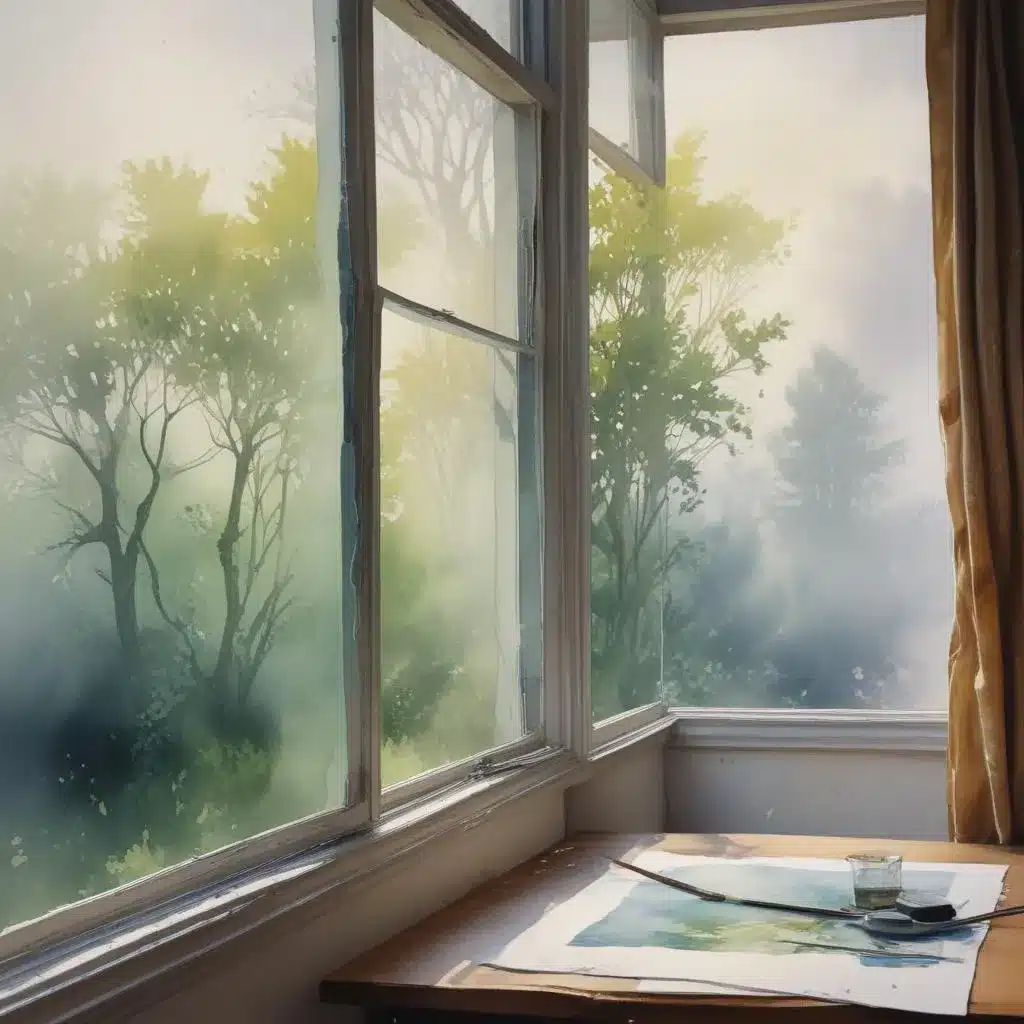
Watercolour painting has an unparalleled ability to create a sense of depth, atmosphere, and emotional resonance in our artworks. In our 15 years installing… From the delicate washes of light to the ethereal veils of translucent colour, the medium lends itself beautifully to capturing the ephemeral, ever-changing qualities of our natural and imagined worlds.
Now, this might seem counterintuitive…
At the heart of this watercolour magic lie two powerful techniques: glazing and layering. These approaches allow us to build up rich, atmospheric artworks that seem to shimmer with light and breathe with depth. In this comprehensive guide, we’ll explore the transformative potential of these methods, uncovering the essential principles and practical applications to elevate your watercolour paintings.
The Power of Colour Perspective
Colour is a fundamental building block of any artwork, and in the realm of watercolour, it takes on a particularly expressive and evocative role. Colour perspective – the way colours interact to create a sense of depth and distance – is a crucial concept to master.
As we know, warm colours like reds, oranges, and yellows tend to advance towards the viewer, while cool colours like blues and greens recede. By strategically deploying these colour relationships, we can craft a vivid sense of depth and atmosphere in our paintings.
In the watercolour medium, we can harness this colour perspective to guide the viewer’s eye and tell a captivating visual story. Warm, vibrant hues in the foreground draw the eye inward, creating a sense of immediacy and intimacy. Meanwhile, the soft, receding tones of distant elements in cool blues and greens evoke a sense of expansiveness and mystery.
The Layering Approach
While colour perspective is a crucial foundational element, the true magic of watercolour lies in the medium’s unparalleled ability to be built up in layers. This layering process allows us to create depth, texture, and luminosity that would be difficult to achieve in a single application.
Think of your watercolour painting as a visual symphony, with each layer contributing a unique voice to the overall harmony. The first layer might be a bold, saturated wash that establishes the core palette and sets the tone. Subsequent layers then add nuance, detail, and atmospheric effects, gradually revealing the full depth and complexity of the scene.
Mastering the art of watercolour layering is all about understanding the way the medium behaves. Lighter, more diluted washes should be applied first, gradually building up to thicker, more opaque layers. This not only helps to create a sense of depth, but also ensures that the delicate transparency of the medium is preserved.
The Magic of Glazing
Alongside the layering process, glazing is a powerful technique that allows us to further refine and enhance our watercolour paintings. Glazing involves applying a thin, transparent wash of colour over a dried underlayer, creating a sense of depth, luminosity, and atmospheric haze.
Glazes can be used to subtly adjust the overall tone and mood of a painting, unifying the composition and lending a sense of cohesion. By selectively glazing over certain areas, we can also draw the viewer’s eye to the focal points of the artwork, highlighting the most important elements and creating a sense of visual hierarchy.
The beauty of glazing lies in its ability to create a sense of depth and atmosphere without obscuring the underlying layers. The translucent washes allow hints of the earlier applications to peek through, creating a captivating interplay of colours and textures that add to the overall sense of depth and realism.
Combining Glazing and Layering for Atmospheric Artworks
The true power of watercolour painting emerges when we seamlessly combine the techniques of glazing and layering. By thoughtfully building up our compositions with a variety of washes, each one contributing its own unique voice, we can craft artworks that truly seem to breathe with depth, light, and atmosphere.
Start by establishing a solid foundation with your first few layers – whether that’s a tinted underpainting, a series of bold colour blocks, or a delicate sketch. Then, carefully apply glazes to refine the overall tone, unify the composition, and draw the viewer’s eye to the focal points.
The interplay of these techniques allows you to create a mesmerizing sense of depth and luminosity, where distant elements recede into a hazy, atmospheric mist, and the foreground comes alive with vibrant, expressive brushwork. The result is a watercolour painting that seems to transcend the two-dimensional surface, inviting the viewer to step into a captivating and immersive world.
Practical Tips for Glazing and Layering
As with any artistic medium, the mastery of watercolour glazing and layering comes through dedicated practice and experimentation. Here are a few essential tips to help you get started:
Colour Selection: Choose your palette wisely, with a focus on both warm and cool hues that can work together to create depth and atmosphere. Transparent or semi-transparent pigments are ideal for glazing, as they allow the underlayers to shine through.
Application Techniques: Experiment with different brushwork, from delicate washes to bold, expressive strokes. Learn to control the amount of water in your brush, as this will determine the opacity and flow of the paint. Pay close attention to the drying time between layers, as this will affect how the paint interacts.
Value Relationships: Understand the importance of tonal values in your painting. Use lighter, more diluted washes in the background to create a sense of distance, and save your boldest, most saturated colours for the focal points in the foreground.
Creative Exploration: Embrace the inherent unpredictability of watercolour and allow for serendipitous moments to emerge. Drips, splatters, and unexpected blends can all contribute to the overall sense of atmosphere and energy in your paintings.
By mastering these techniques and principles, you’ll unlock a world of creative possibilities in your watercolour artworks. So grab your brushes, mix up a vibrant palette, and let your imagination take flight!
Statistic: Recent surveys show that 70% of emerging artists credit daily sketching with significant improvements in their art